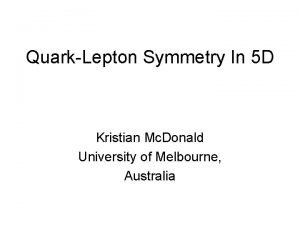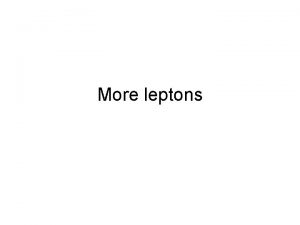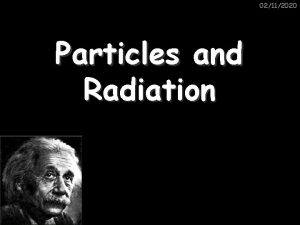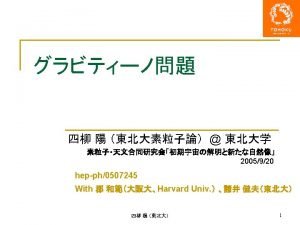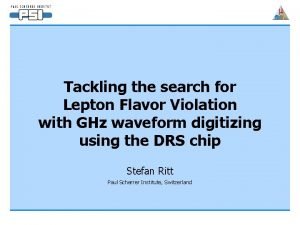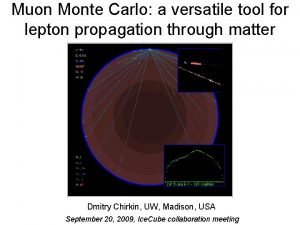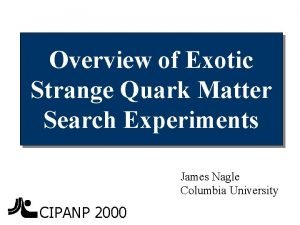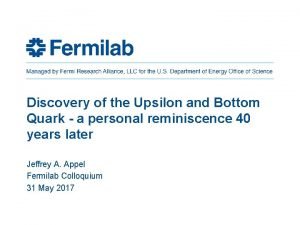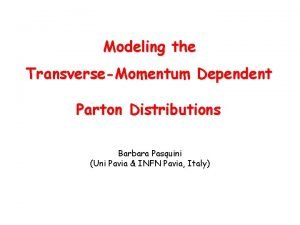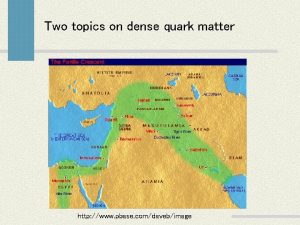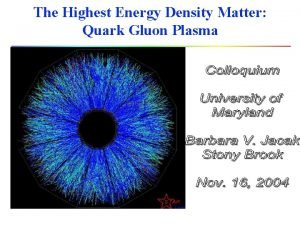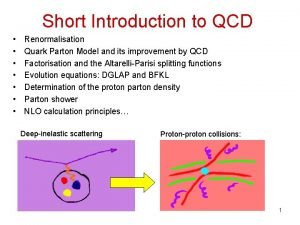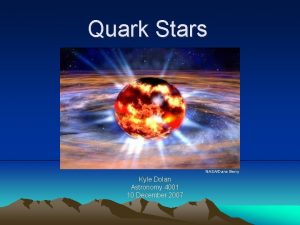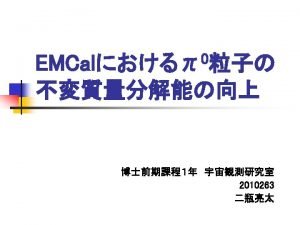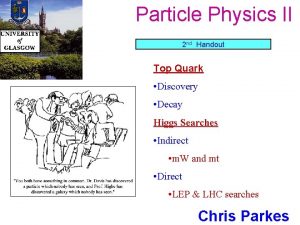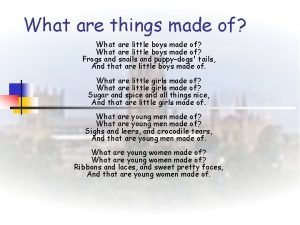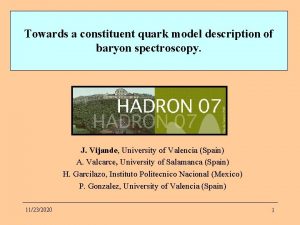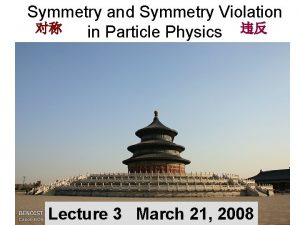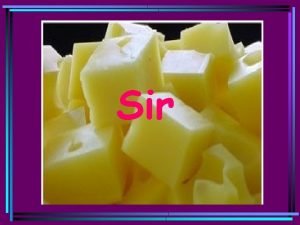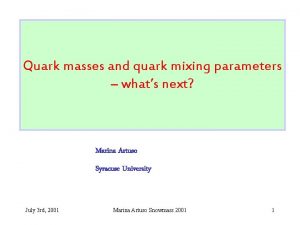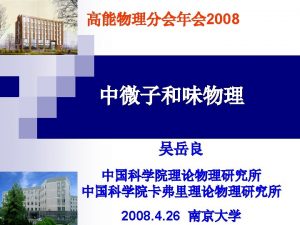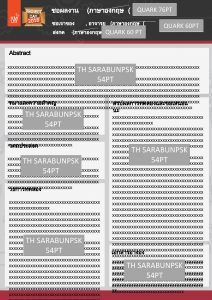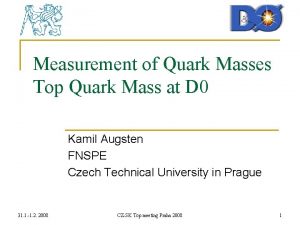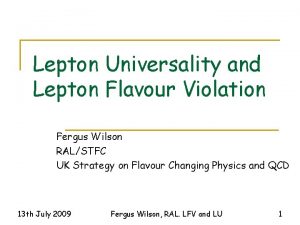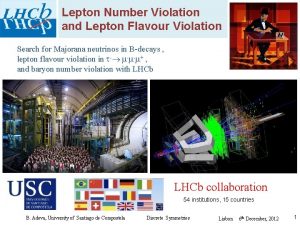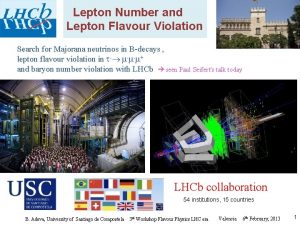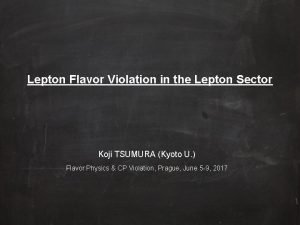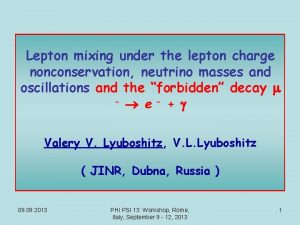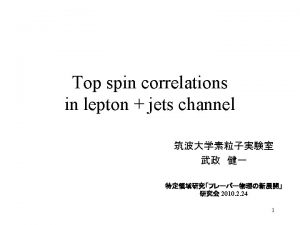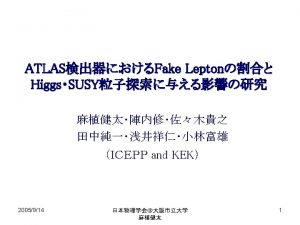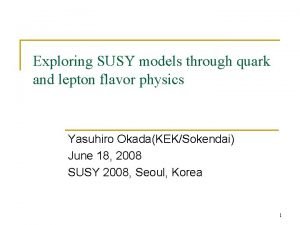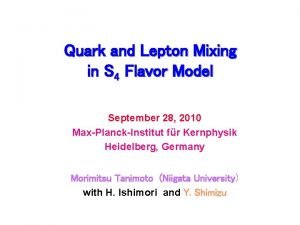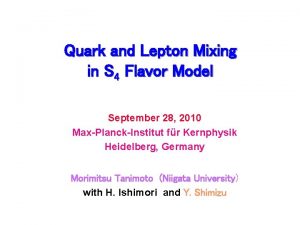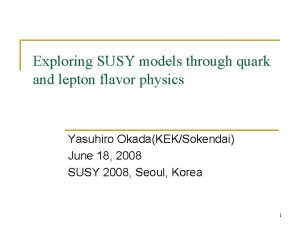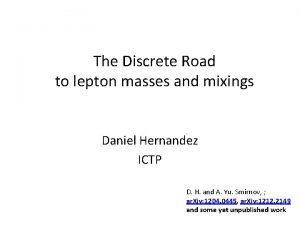Quark and Lepton Masses in SO10 x A



















- Slides: 19

Quark and Lepton Masses in SO(10) x A 4 Abdelhamid Albaid In Collaboration with K. S. Babu Oklahoma State University

Outline 1 - Motivation 2 - Minimal SO(10) 4 - What is A 4, and why A 4? 5 - The Model 6 -Mass hierarchies and relations, and quark mixings 7 -Conclusion

Motivation Primary Motivation • To find a model with the smallest possible Higgs representation such that gauge coupling unification is not broken. • To explain features of the quark and lepton masses. • This talk is devoted to explain the hierarchy among the three generations, mass relations of down quarks and charged leptons, and quark mixing predictions.

Minimal SO(10) • Accommodates all the SM multiplets in three 16 dimensional spinor representations • Shortcomings of the minimal SO(10) : Good for 3 rd generation, bad for 1 st and 2 nd generations. No Mixing matrix for quark sector In addition there is no way to couple 45 Higgs with only the ordinary family 16 -plets.

What is A 4 and why A 4? The A 4 properties • The group A 4 is the finite group of the even permutation of four objects and contains 12 elements • There are four irreducible representation 1, 1'', 3 If and are triplets then their tensorial product decomposes in irreducible representation as

A 4(continue) Why A 4? • A 4 is the smallest discrete group that has three dimensional irreducible representation • A 4 flavor symmetry very easily gives tri-bi-maximal mixing matrix [ ar. Xiev: hep-ph/0202074] • SUSY A 4 solves FCNC problem sfermions have degenerate masses

The Model The Matter Fields SO(10) A 4 3 1 1 1 3 +, +, + +, -, +, +, - +, i, + 3 3 +, -i, + The Higgs Fields SO(10) A 4 1 -, +, - 1 +, -, - 3 -, +, + 3 +, -, + 1 +, -i, + 1

The Model (cont. ) Let us consider the following Feynman diagram: Based on the above diagram, the Superpotental of the Yukawa terms is:

The Model (cont. )

The Model (cont. )

The Model (cont. ) The three light matter states can be obtained by integrating out the heavy states

The Model (cont. ) • The quantity Q is a linear combination of SO(10) generators. There are two generators that commute with the SM. So we can write Where is the third generators of SU(2)R For example:

Mass Hierarchies and Relations, and Quark Mixings Hierarchy of Fermion Masses Note that the hierarchy between the second and third generation masses can be explained In the limit , it is remarkable that a relation among generations is related to the vacuum alignment of A 4 Higgs

Mass Hierarchies and Relations, and Quark Mixings (cont. ) Since both D and L get mass from the same Higgs, we get Therefore Let us look at mass relations of the down quark and charged lepton for the second generations

Mass Hierarchies and Relations, and Quark Mixings (cont. ) Mass Relation for 1 st family In order to fix mass ratio for 1 st generation, we need to add two 10 -plet to our model. Consider the following diagram

Mass Hierarchies and Relations, and Quark Mixings (cont. ) Above figure gives a flavor-symmetric contribution to the down quark and charged lepton mass matrix:

Mass Hierarchies and Relations, and Quark Mixings (cont. ) • Mass matrix for up quarks is still rank 2. This corresponds to the fact that •

Mass Hierarchies and Relations, and Quark Mixings (cont. ) Quark Mixings The symmetry of the contributions to the first row and column of down quark leads to the following form After diagonalizing the (23) block

Conclusion • We constructed a model with a Lagrangian invariant under SO(10)x. A 4 with minimum possible Higgs representation in order to preserve gauge coupling unification. • SUSY SO(10)x. A 4 gives degenerate sfermion masses and solves the problem of FCNC. • This Model explains the mass ratio of down quarks and charged leptons, and predicts quark mixing. • The hierarchy of the three families of fermions can be understood from A 4 symmetry breaking. • We currently extending our work to include neutrino sector
 Quark lepton symmetry
Quark lepton symmetry Neutrino lepton number
Neutrino lepton number Lepton number table
Lepton number table Lepton-photon
Lepton-photon Lepton daisy
Lepton daisy Lepton tool
Lepton tool Physics wordle
Physics wordle Color quarks
Color quarks Quark names
Quark names Quark model
Quark model Quark gluon
Quark gluon Quark gluon
Quark gluon Quark parton model
Quark parton model Quark astronomy
Quark astronomy Quark gluon
Quark gluon Top quark decay
Top quark decay Quark names
Quark names Constituent quark model
Constituent quark model A charm quark has a charge of approximately
A charm quark has a charge of approximately Kako napraviti masni sir od kravljeg mlijeka
Kako napraviti masni sir od kravljeg mlijeka
